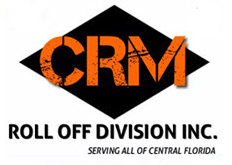Choosing the Right Dumpster Size for Your Home Project
When it comes to home projects—whether it’s a renovation, cleanout, or landscaping job—having the right dumpster size is key. Not only will it save you money but it will also ensure efficient waste disposal. Choosing the wrong size will result in overage charges, delays or even having to rent a second dumpster. This guide will help you choose the right dumpster size for your home project so you can have a smooth and stress free experience.
Why Dumpster Size Matters
Choosing the right dumpster size isn’t just about cost; it’s also about convenience, compliance and efficiency. Here’s why it matters:
- Cost effective: Renting a dumpster that’s too small will result in extra fees or a second rental. Renting a dumpster that’s too big will waste money.
- Project efficiency: The right dumpster size will keep your debris from piling up and keep your workspace safe and organized.
- Avoiding overage fees: Dumpsters have weight limits. Overfilling a small container will result in overage charges.
Common Dumpster Sizes for Home Projects
Dumpster rental companies offer a range of sizes, measured in cubic yards. Here’s a quick rundown of the most common:
10-Yard Dumpster
- Dimensions: 10 ft long x 7 ft wide x 3.5 ft high
- Capacity: About 3 pickup truck loads
- Ideal for: Small home cleanouts, garage decluttering, minor remodeling, yard debris
- Best for: Single room renovations or seasonal clean-ups
15-Yard Dumpster
- Dimensions: 16 ft long x 7.5 ft wide x 4.5 ft high
- Capacity: About 4.5 pickup truck loads
- Ideal for: Medium sized cleanouts, roofing jobs, small landscaping projects
- Best for: Removing carpet/flooring from a medium sized home or disposing of heavy materials like shingles
20-Yard Dumpster
- Dimensions: 22 ft long x 7.5 ft wide x 4.5 ft high
- Capacity: About 6 pickup truck loads
- Ideal for: Kitchen and bathroom remodels, attic cleanouts, deck removal
- Best for: Larger renovation projects and bulkier debris
30-Yard Dumpster* Dimensions: 22 ft long x 7.5 ft wide x 6 ft high
- Capacity: About 9 pickup truck loads
- Ideal for: Whole home cleanouts, major renovation projects, new home construction
- Best for: Families moving out, hoarder house cleanouts
40-Yard Dumpster
- Dimensions: 22 ft long x 7.5 ft wide x 8 ft high
- Capacity: About 12 pickup truck loads
- Ideal for: Major construction or demolition, large scale home additions
- Best for: Contractors, real estate investors, or extensive remodeling jobs
How to Choose the Right Size for Your Home Project
1. Assess the Scope of Your Project
The first step in choosing the right dumpster size is understanding the type and volume of waste your project will generate. Ask yourself:
- Are you renovating a single room or the entire house?
- Will there be bulky items like furniture or appliances?
- Is it a quick weekend cleanup or a month long renovation?
2. Estimate Debris Volume
If you’re unsure how much debris your project will create, consider these rough guidelines:
- Small cleanouts (closets, bathrooms): 10-yard dumpster
- Medium cleanouts (garage, basement): 15–20 yard dumpster
- Major home cleanouts/renovations: 30–40 yard dumpster
You can also consult with your dumpster rental provider to help estimate debris volume based on your project description.
3. Consider the Type of Waste
Different types of debris take up space differently:
- Construction debris (drywall, wood, tile) can be bulky but lightweight.
- Household junk (furniture, clothes, appliances) often varies in weight and size.
- Yard waste (branches, dirt, grass) might be dense and heavy.
Always mention the type of materials when booking your dumpster to ensure the right fit and avoid weight overages.
4. Account for Weight Limits
Each dumpster has a weight limit, which varies by size and provider. Exceeding this limit will result in extra fees. For example:
- 10-yard dumpsters often have a 1–2 ton limit
- 20-yard dumpsters may have a 2–3 ton limit
- 30-yard and 40-yard dumpsters typically have a 4–6 ton limitIf you’re going to be disposing of heavy materials like concrete, roofing shingles or dirt, ask about heavy debris dumpsters.
5. Space Considerations
Make sure you have enough room to place the dumpster. Consider the driveway width, overhead clearance and proximity to your home or street. Larger dumpsters (30–40 yard) require more space and can damage driveways if not handled properly.
If space is limited, you may need to opt for a smaller dumpster or request multiple pickups for a mid-size container.
Tips for Renting the Right Dumpster
- Shop around: Prices, sizes and weight limits vary, so compare.
- Ask about permits: You may need a permit if the dumpster is placed on a public street.
- Don’t overfill: Keep debris below the rim to avoid extra charges or denial of pickup.
- Plan ahead: Book your dumpster in advance, especially during peak season (spring and summer).
Conclusion
Choosing the right dumpster size for your home project is key to managing waste. Whether you’re decluttering a room, remodeling your kitchen or tackling a whole home renovation, choosing the right size helps you stay on budget and on track.
If in doubt, always best to consult with a professional dumpster rental company. With a quick chat about your project type, estimated debris and site conditions, they can guide you to the perfect size.
Need help choosing the right size? Contact your CRM Roll dumpster rental company for personalized advice and same day delivery.

